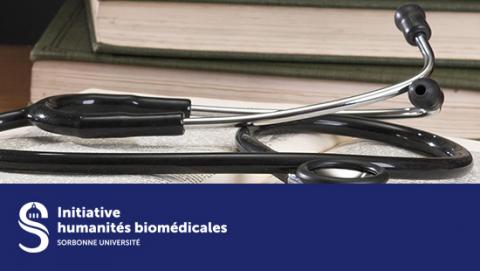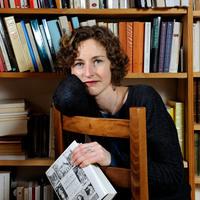
"Our objective is to create a dialogue between medicine, biology, the humanities and social sciences"
Claire Crignon, associate professor in philosophy.

Claire Crignon co-directs the Bio-medical Humanities initiative with Alexandre Escargueil, professor in molecular biology. This structure offers an interdisciplinary approach to issues related to medicine and health.
You are co-responsible for the Biomedical Humanities initiative. How was this initiative started?
Claire Crignon: It is part of a long tradition of exchange between disciplines relating to the humanities (philosophy, literature, sociology, cultural anthropology, history and art history) and medicine, which according to Georges Canguilhem, is an "art at the crossroads of several sciences" (anatomy, physiology, biology or chemistry).
Following an interdisciplinary approach initiated more than four years ago by the three faculties of Sorbonne University, the initiative first took shape around the project of transdisciplinary education in the field of health (innovation and health). This project is now reinforced by the possibility of students at the Faculty of Arts and Humanities to access medical studies. It is also structured around research, in particular within the integrated cancer research site (Siric) and the Curamus project headed by Marc Sanson, started in 2018.
What are the challenges of the initiative in terms of academic programs?
C.C.: One of the challenges of this initiative is to educate the student community in an interdisciplinary approach with strong practical and experimental aspects. In the humanities and social sciences (HSS), students are sometimes have the willingness to leave the field to raise questions or to question concepts in a critical way. As for those who study medicine, they often feel the need for thoughtful feedback on their practice.
In this context, I proposed the creation of a master's degree in bio-medical humanities supported by the Philosophy department of the Faculty of Arts and Humanities. Through this master's degree, medical students will be able to train in humanities and social sciences. Conversely, the student community of the Faculty of Arts and Humanities will be able to do internships at the hospital and better understand through observation and field work. This type training is also part of the growing trend to integrate HSS into medical studies, with the Pass (Specific Health Access Path) and Las (Health Access License) courses.
What are its challenges in terms of research?
C.C.: The objective is to create a research community in which a real dialogue can take place between science, medicine and the HSS. A dialogue that is not just a way of outsourcing to the HSS the task of caring for patients and the well-being of nursing staff. But a dialogue which leads to the questioning of practices, concepts or terms that are spread and imposed in everyday language. Without giving the HSS a dominant position in relation to medicine, it is a question of making field observations a means of questioning and challenging theoretical thinking.
Our approach is part of a long-term perspective, from Antiquity to the present day. It is not limited to approaching questions from an ethical point of view, but includes other approaches such as the history and philosophy of medicine and art, classical and modern letters, sociology and anthropology, information and communication sciences, which are particularly useful for deciphering the dissemination of information and fake news relating to health via the media and social networks.
We are also concerned with building collaborations with other initiatives or research institutes, such as the Antiquity Science Initiative or the Institute for Environmental Transition. This type of collaboration would make it possible, for example, to articulate questions such as that of the relationship between the environment and health already present in ancient texts and based in modern times through the notions of unsanitary air or the transmission of diseases.
Can you give us examples of the application of this research?
C.C.: The current health crisis is a case study for our interdisciplinary thinking. One of our projects is to compare the perception of this crisis between different European countries according to cultures, traditions, different care systems and their relationship to the environment.
Other projects are underway: we are preparing a book comprising photographs from the Dupuytren pathological-anatomy collection. This scientific and medical heritage at the University is an exceptional opportunity to consider the exchanges between medical sciences, art, literature, anthropology and philosophy.
We also examine the current forms of participation in health by focusing on the role played by patients. In this context, we have started a collaboration with the National Museum of Natural History around methods and tools from participatory sciences.
How do you combine medicine, the humanities and social sciences on a daily basis within the initiative?
C.C.: The dialogue between the humanities and medicine takes time. While doctors work in a short timeframe, that of the medical emergency, in the humanities, we work over longer periods of time. To have something to say about medical practices, you have to go to the wards, meet the patients, patient associations, teams, and try to understand the scientific issues of their research programs.
In the case of Siric Curamus, where the bio-medical humanities constitute a transversal research axis, some real work of acculturation has been carried out. Alongside the doctors, the researchers in the humanities went to hospital departments to conduct interviews with caregivers and patients (for example on the question of the place of emotions in the therapeutic relationship).
Within this interdisciplinary group, we have also started to set up a “medical humanities” café, with the intention of creating a space for discussion within the hospital between caregivers, patients and researchers in science & engineering, medicine, and the humanities.
